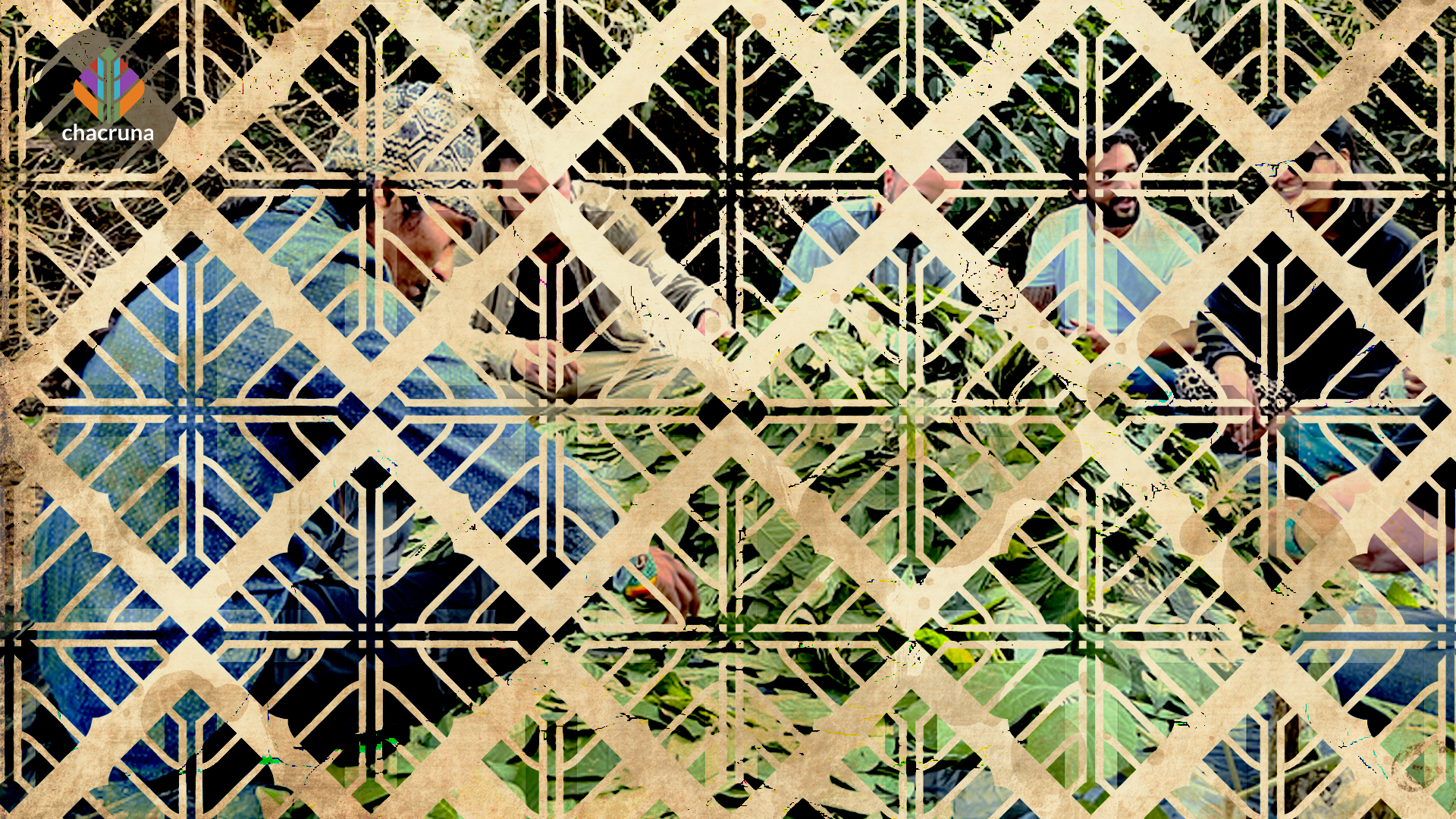- 2024 Begins with Trepidation in Psychedelic Medicine and Markets - January 26, 2024
- This is How Jurema, a DMT-Containing Tree, Helped the Pankararé People Recover Their Land in Brazil - December 29, 2023
- The Triumphant Comeback of Psychedelics - July 24, 2023
Chacruna retreat in the state of Minas Gerais included a feitio, the labor-intensive process of cooking the sacramental beverage.
It was already past 2 a.m. Once finished the ceremony in the Céu da Divina Estrela (Heaven of the Divine Star), one temple of the Santo Daime Church in Santa Luzia (state of Minas Gerais, Brazil), a group of eight people volunteered to continue with the bateção (smashing) at the feitio shed, about 200 yards from the temple erected on site.
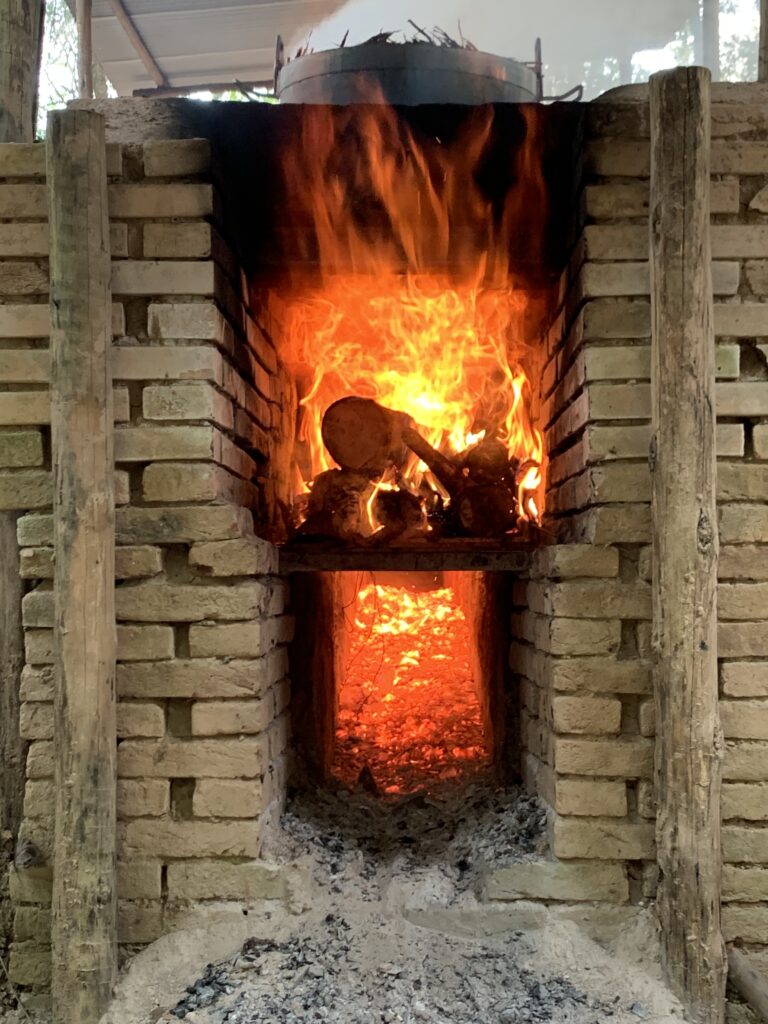
Several kilos of macerated jagube vine (Banisteriopsis caapi) were needed to fill up the 120-liter pots that would occupy the six boiling spots at the furnace, which was continuously fed with logs by Ramon Barboza. He was invited to assist in the brewing supervised by the Chilean Elias Jobel when the leader, Glauber Loures de Assis, was not present, accompanied by Marco Antonio Costa and Romero Meireles.
The instruction was to hit the vine’s wooden braids with clubs until they came apart in fibers as thin as hair. Jagube is an important ingredient in the daime drink, also known as ayahuasca, as it provides the beta-carbolines that inhibit the enzyme monoamine-oxidase (MAO).
The instruction was to hit the vine’s wooden braids with clubs until they came apart in fibers as thin as hair. Jagube is an important ingredient in the daime drink, also known as ayahuasca, as it provides the beta-carbolines that inhibit the enzyme monoamine-oxidase (MAO).

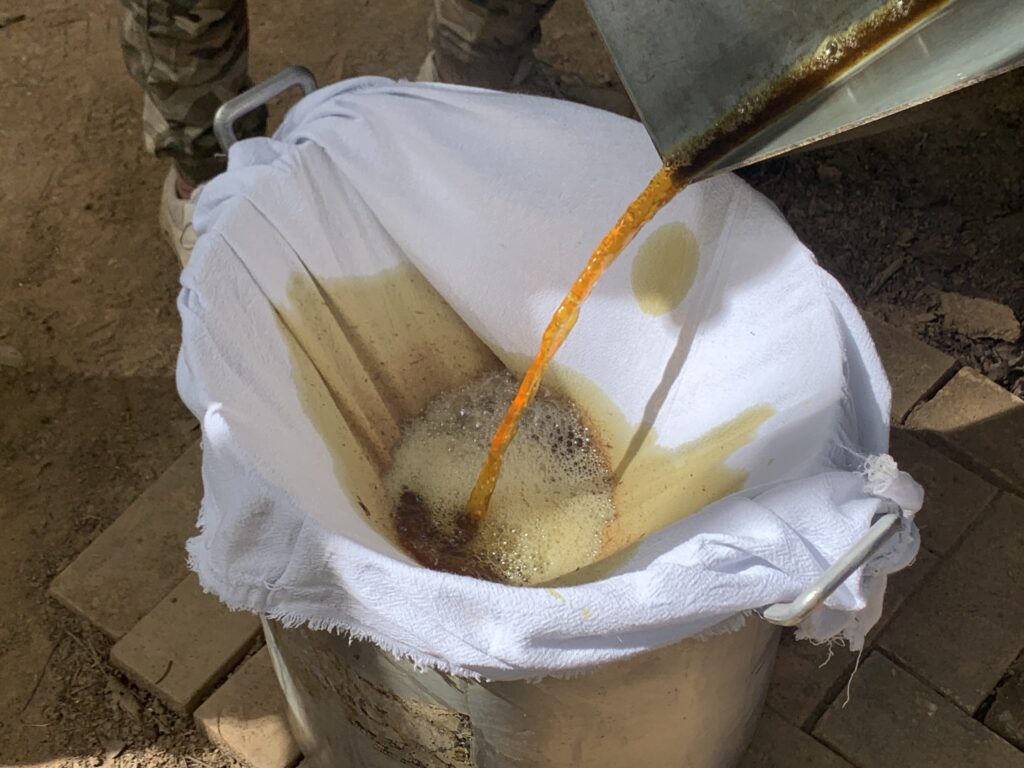
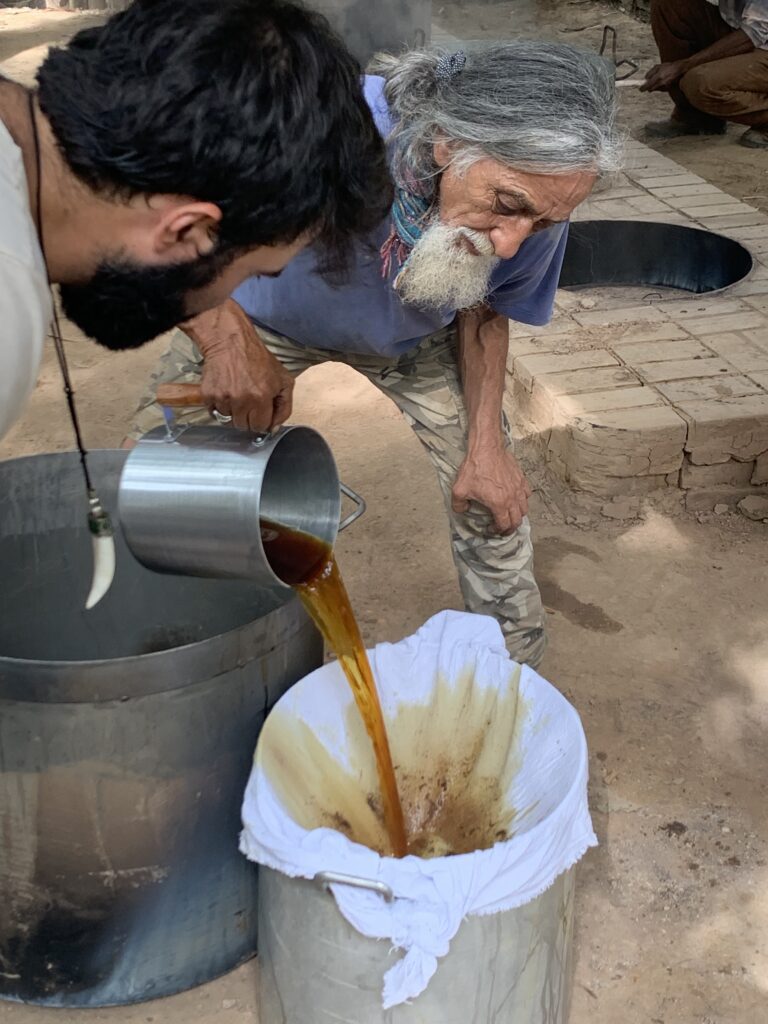
Without beta-carbolines such as harmine, the psychedelic compound dimethyltryptamine (DMT), an entheogen present in the leaves of the shrub chacruna (Psychotria viridis), would be degraded in the digestive tract and prevented from reaching the brain. The beverage would then become unable to produce the altered state characterized by mirações, as daimistas call the colorful visions of mandalas, events, and sometimes animals such as snakes, if not fully mystical images.
Apart from three rituals with daime, the preparation of the sacramental brew was one of the highlights in the ten-day retreat organized for integration of the Chacruna Institute team.
Apart from three rituals with daime, the preparation of the sacramental brew was one of the highlights in the ten-day retreat organized for integration of the Chacruna Institute team. Chacruna is an NGO based in San Francisco, CA, directed by Brazilian anthropologist Bia Labate.
The local host was the sociologist Glauber, head of the Divine Star and Brazil’s associate director of Chacruna Latinpamérica. He follows the leadership of padrinho Alfredo [Gregório de Melo], elder of the Heaven of Mapiá temple in the Brazilian state of Amazonas, radiating center of the Santo Daime diaspora across Brazil and other countries in the world. (Padrinho means “godfather” in Portuguese, and in religious circles is sort of a patriarch.)
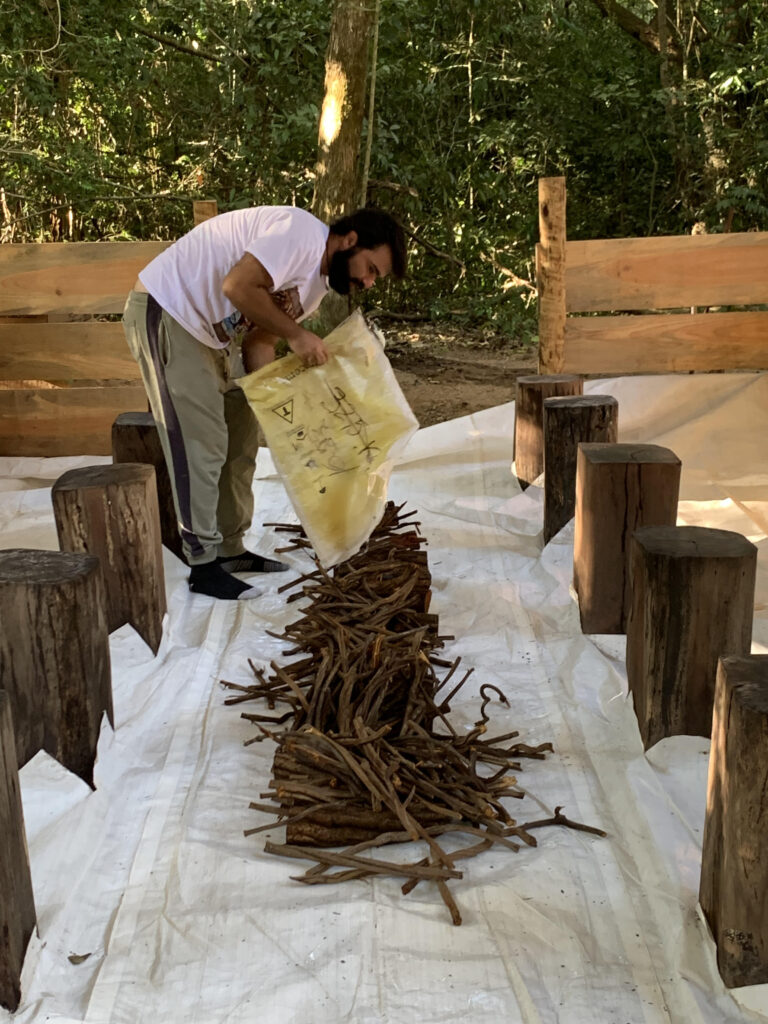

Glauber adheres to the recipe handed down by padrinho Alfredo, who received and perfected it from his father, padrinho Sebastião [Mota de Melo] (1920-1990). The latter was a daime maker for Master Irineu (Raimundo Irineu Serra), founder of the Santo Daime religion.
Brewing daime is a collective activity, as well as a ritual in which all members of the community can take part, women and children included. There’s work for everyone.
Brewing daime is a collective activity, as well as a ritual in which all members of the community can take part, women and children included. There’s work for everyone, from collecting chacruna leaves (also called rainha, queen) and the vine to cutting it in specified lengths and selecting and cleaning the leaves.
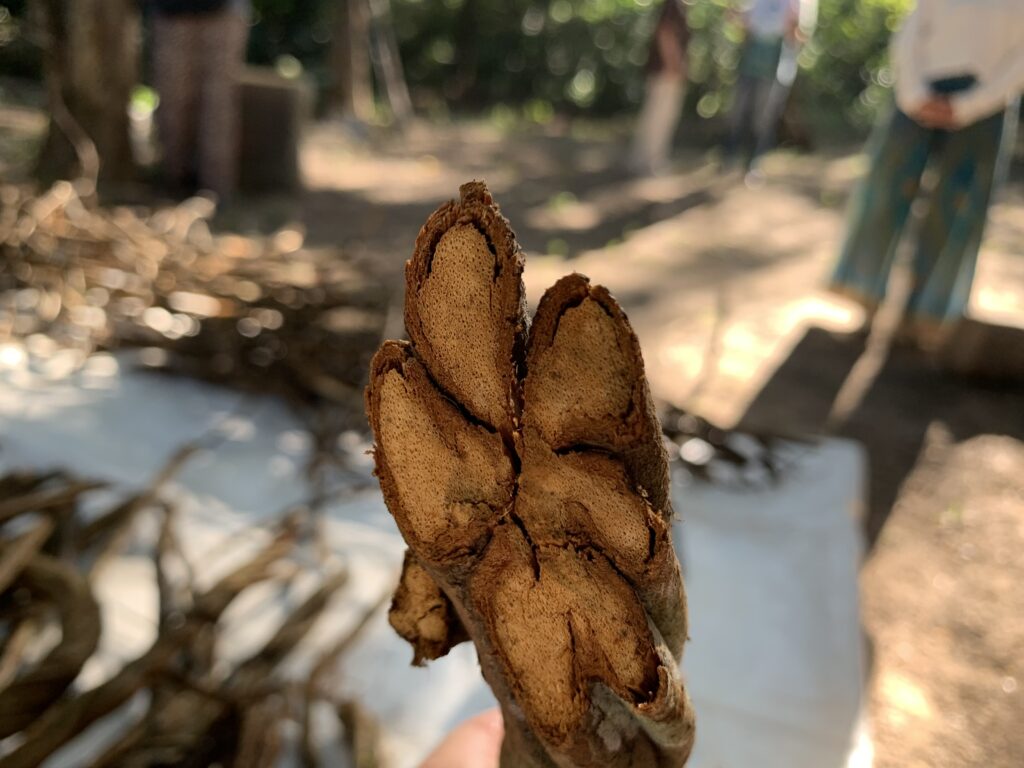
The smashing was done in the traditional fashion, by hand, on stumps fixed to the floor of the feitio shed, covered with a white canvas (some other feitio places might employ machines to chop up branches). Barefoot, the smashers pounded the vine sticks with rhythmic punches, following the cadence of hymns sung nonstop, hours on end.
On that particular day the work continued till around 5 a.m. Each pot was then stacked with seven layers of the two ingredients. In the first layer, sturdy jagube fibers cover the bottom of the pot, in order to avoid direct contact—and consequent burning—of the chacruna leaves with the metal. Once there is a bed of green leaf material, fibers can be layered with the powder, also produced in the smashing of jagube.
In the feitio during the Chacruna retreat, each pot received 40 kilograms (kg) of vines, 8 kg of leaves, and 60 liters of water. After a few hours over the fire the yellowish-brown liquid is reduced to half the volume and then collected in the drainer, a metal gutter mounted on a wooden frame. At this point the brew is not yet considered daime, i.e. it cannot be used as sacrament in rituals.

The feitio at the Divine Star employs a trio of pots, or more than that, but always in multiples of three. The concentrated liquid from the first two pots is then poured in the third, assembled with the noblest material of jagube and carefully chosen chacruna leaves. The resulting batch is then cooked for a new reduction phase over the fire, and only when it is finished the beverage attains a sacramental status.
During the feitio ritual, the staff usually drink several small doses of daime. Taken directly from the drainer, still hot, daime does more justice to its common designation as a tea, both in color and taste.
During the feitio ritual, the staff usually drink several small doses of daime. Taken directly from the drainer, still hot, daime does more justice to its common designation as a tea, both in color and taste. The golden liquid does not present the characteristic bitterness of the bottled beverage served in ceremonies, most likely a result of fermentation.
In the original recipe, which according to the Santo Daime lore Master Irineu received by revelation in the very forest where jagube and chacruna were plentiful, the feitio would stop right there. The resulting brew is called first degree daime.
With increasing difficulty in procuring the ingredients, that procedure has been modified by padrinho Sebastião to make the most of the available vines and leaves. Instead of being thrown away, the raw material is cooked again
With increasing difficulty in procuring the ingredients, that procedure has been modified by padrinho Sebastião to make the most of the available vines and leaves. Instead of being thrown away, the raw material is cooked again with more water in another set of three pots. Out comes a second-degree daime.
His son Alfredo went on and beyond, deciding to continue cooking again and again the same material, with successive turns of evaporation.
This is how third-degree and fourth-degree daimes emerge, and so on. The quantities may vary a bit from church to church that follow the recipe of padrinho Alfredo, but the general principle of raw materials reuse and liquid reductions is pervasive.

Join us for our Roots of Psychedelic Therapy: Shamanism, Ritual and Traditional Used of Sacred Plants course, August 8th – November 21st, 2023
By mixing up daimes in different degrees, one can cook a new batch in pots filled only with chacruna leaves, which requires constant mixing with long sticks called cambitos, in order for the leaves not to stick to the bottom of the pot. This process is how a strong daime is produced that qualifies as 3:1.
Subsequent batches are reduced to even smaller volumes per pot, then poured together in a new pot for reduction. That’s how one gets the 5:1 daime, a dark one used in healing works that is capable of inducing strong purges (vomiting).

Proceeding with the reprocessing and adding leaves, one can obtain a viscous and sweet 10:1 daime often referred to as mel (honey). Continuing the process to the point 20:1 or higher, a sort of gel can be extracted, whose low volume made it easier to export to churches that spread around Brazil and the world.
After two days of feitio at the Heaven of the Divine Star church, 140 liters of daime resulted. It was then packaged still hot in sanitized bottles, to avoid fermentation as much as possible.
After two days of feitio at the Heaven of the Divine Star church, 140 liters of daime resulted. It was then packaged still hot in sanitized bottles, to avoid fermentation as much as possible. The drink produced during the retreat ended up being served at last ceremony, which included a bailado (dancing).
In the final stage of this ritual—which can last several hours—participants dance in a circle to the sound of hymns, without setting foot out of the rectangles painted on the floor. The initial steps of the three sole rhythms (march, waltz, and mazurka) always start to the left, synchronizing the movements of all dancers).
Visually, the dancing congregation was compared by an observer to the oscillation of a gear, back and forth, back and forth. Inside the circle, dancing and chanting in unison under effect of the daime that everybody had helped smash and cook, even a steadfast atheist would have a hard time not feeling part of a primeval, smiling community, viscerally peaceful and aggrandizing.
Note: Originally published in Portuguese by Folha de S.Paulo on the blog Virada Psicodélica HERE.
Art by Mariom Luna.
Take a minute to browse our stock:
Did you enjoy reading this article?
Please support Chacruna's work by donating to us. We are an independent organization and we offer free education and advocacy for psychedelic plant medicines. We are a team of dedicated volunteers!
Can you help Chacruna advance cultural understanding around these substances?










